I’ve been hearing a lot about The Forager’s Guide to Wild Foods and I decided to buy it and see if this is indeed the book that I’ve been looking for all along.
I think that if you want to be prepared, you definitely need to know the plants, mushrooms, trees and berries that grow in YOUR AREA.
This kind of information can save us one day from starvation, but also I wanted a good source of information to have on me whenever I go in the outdoors. Unlike our forefathers, we no longer know all the plants growing around us.
When I ordered The Forager’s Guide to Wild Foods the estimated delivery time was a week. It arrived in 5 days, so that was a nice surprise as I usually have to check to see why my orders are taking so long to arrive.
First Impressions
The first thing I’ve noticed was the weight of the package. It felt heavy for a book.
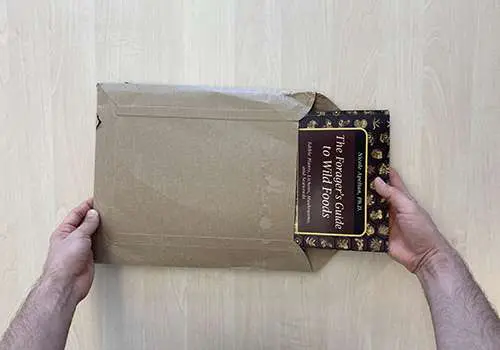
This is a good-looking book, possibly the ‘sexiest’ book I have ever seen. When my wife saw it, she took it from my nightstand and used it as a coffee table book. There is something hypnotizing about it. Everyone who visits flips through it or asks about it.
It smelled like freshly printed paper. I decided to put it to one of my little tests. I call it the “will it stay open” test. I have a hard time with tiny books that always require your thumb to stay open.
Well, The Forager’s Guide to Wild Foods doesn’t require my thumbs or any of my fingers to lay flat on a surface if need be.
The Forager’s Guide has 320 pages, and contains 400 wild foods.
What I like about The Forager’s Guide to Wild Foods is that it looks like one of those books that can withstand wear and tear. When it comes to foraging books you have to be able to take them with you in the wild, whether it’s green pastures or nasty, muddy, rough terrain.
Mind you, this is a big book. And there is a reason why it’s big. It’s because of the photos.
Most books on foraging STILL use illustrations. Not only that, they use black and white illustrations.
For me, this was the reason why most great books on foraging never made it past the cash register. You can’t EVER correctly identify a plant FROM ONE ANGLE, using a black and white drawing.
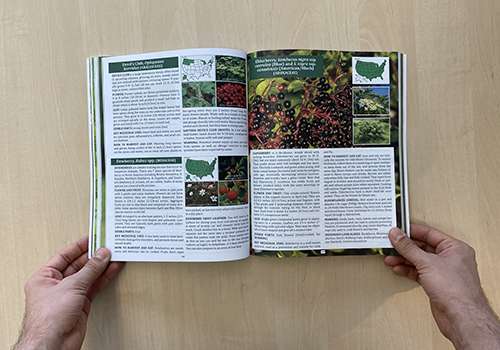
You might return home empty handed, or with a poisonous lookalike in your goodie basket. NOT the case with this book, as all pictures are clear and every plant has multiple photos.
You have an average of 2 plants per page, but a lot of pages have only one plant. Recipes are also provided.
The Forager’s Guide to Wild Foods – Structure
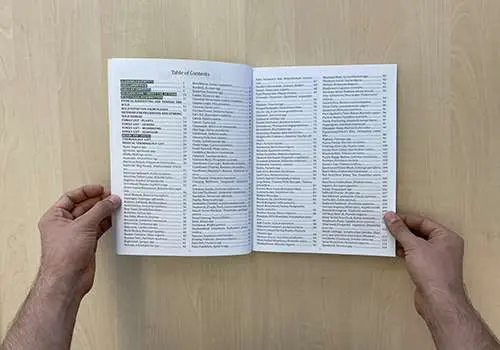 This book is structured into 7 big chapters as you can see above. These are:
This book is structured into 7 big chapters as you can see above. These are:
- Herbs and Greens
- Shrubs and Berries
- Trees
- Lichens
- Mushrooms
- Seaweeds and Marine Grasses
- Poisonous and Toxic Look-Alikes
Each plant has a general description, complete with pictures from relevant angles, including the flower, fruit and leaves. Its edible parts are all listed, including at least one way to prepare them.
Key medicinal uses are a feature I found extremely interesting, and the benefits are clearly outlined so you’ll know which specific health problem the plant is good for.
To make things easier a map is put next to every plant and that saved a lot of my time since I was particularly interested in foraging wild plants in ONE specific area of the U.S.
You also get a tried and tested recipe to highlight the nutritional qualities and flavors of each plant, and full blown pictures of poisonous lookalikes.

For every plant you’ll find:
- Picture with the whole plant
- 2 pictures of distinctive parts for each plant (leaves, flowers, berries, stem, roots, etc)
- Map for each plant
- General description, complete
- Flower and Fruit
- Leaf
- Edible Parts
- Key medicinal uses
- How to harvest and eat
- One of the best recipes for this plant.
- Poisonous Lookalikes
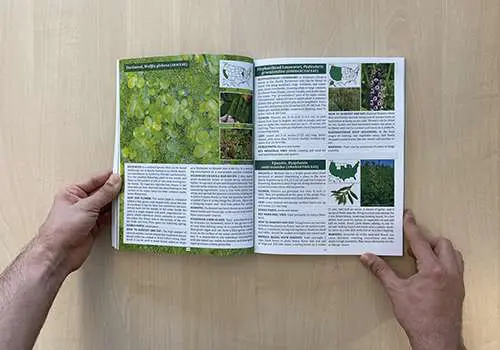
These are not features you see all together in one book, or at least I haven’t seen them in one place.
I believe this is one of the most important books you can keep in your home not only as a forager or survivalist, but as a person who is concerned about depending on supply chains that could collapse at the drop of a hat.
This is one book you probably won’t want to have missing from your bug out bag and survival stash, as this is a golden ticket to food independence, especially when you are on the go.
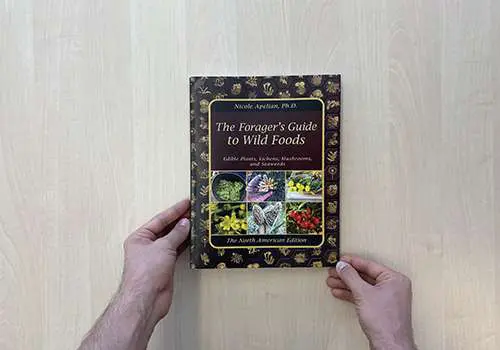
The One Bad Thing
Despite all the features that have been put together masterfully in this one book, I must say that there is something that I wish was done differently.
When foraging in the wild I find it easier to use a smaller book that is easy to carry.
Sadly, this book is not pocket sized and it doesn’t have detachable pages. It’s big and it is heavy, it’s not easy to take on a hike, but at the same time it would have been impossible to have good large pictures with plants and so many details in a pocket size book. This is the type of survival book you have to study and not carry around.
The Forager’s Guide to Wild Foods Review – Final Thoughts
Overall The Forager’s Guide to Wild Foods is a valuable find. I expected a thorough guide, but I was pleasantly surprised by the wealth of lost knowledge uncovered in this book. I feel that this is great value for money and there are so many things to learn from this book.
If you haven’t already got your copy of this book, go ahead and:
Click Here to Get Your Copy of The Forager’s Guide to Wild Foods!
You may also like:
The Great Depression Food That Saved America (Video)
13 Plants That Thrive In Shade
7 Common Raised Bed Mistakes Every Person Should Avoid
10 Easy Ways to Turn Profit from Your Homestead
If You See These Eggs In Your Backyard, Burn Them Immediately

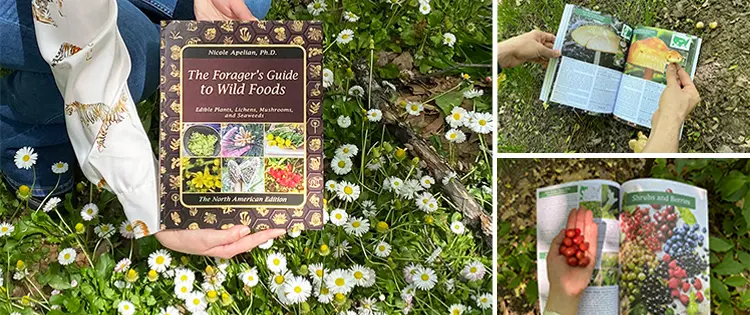
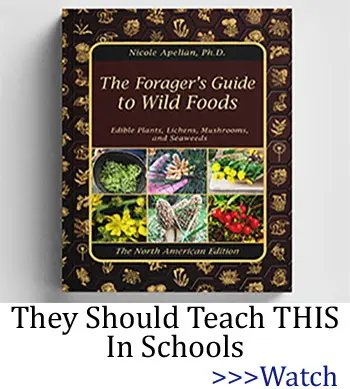








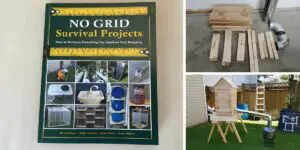




I too ordered this book and it arrived in 5 days, as stated, what a nice surprise. The book is beautifully printed however I don’t think it’s quite the field book Claude makes it out to be. House / Car / Camper / RV book yes, definitely, but not backpack. I don’t think the binding would hold up to too many hardcore outings. I’d say, use the smaller (color plates versions) of Smithsonian, Nygeres or Peterson’s Field Guides then confirm any questionable plants with this larger book once you return to camp. Do I recommend this book? Without question… YES! It belongs in every outdoors and field craft library.
Beautiful book but not enough detail to eat! Pictures and descriptiongs not detai;ed enough.
I need to be reimbursed.
Hi Patricia,
Thank you so much for your interest in our work.
I am sorry to hear that the package is not what you expected.
I sent you an email with more details about our refund policy. You will receive it from support@selfsufficientprojects.com.
Please also check spam/junk folders.
If there is anything else we can help you with, don’t hesitate to contact us.
God bless,
The Self-Sufficient Projects Team
I hate to admit this book is not what I thought it be . It’s to big to carry on outings … I’m in scared I’d tear it outup .. I would like to return it if possible. My Gmail isdeniseolson256@gmail.com
Hi Denise,
Thank you so much for purchasing the book.
We will forward your request to The Forager’s Guide to Wild Foods Support Team and let them know about your order. You will receive an email from foragersguide@thelostherbs.com regarding your order and return details.
If there is anything else we can help you with, don’t hesitate to let us know.
God bless,
The Self-Sufficient Projects Team
I ordered this book on the 7th of September, last month, and I still have yet to receive it! Please send my product.
Hi Robert,
Thank you so much for purchasing the book.
If you have any questions about your order, please contact The Forager’s Guide to Wild Foods Team here: https://foragersguide.com/contact .
We will forward your request and let them know about your order. You will receive an email from foragersguide@thelostherbs.com regarding your order.
If there is anything else we can help you with, don’t hesitate to let us know.
God bless,
The Self-Sufficient Projects Team
I ordered the book plus other books that the offer me, however I received only the first one I need my money back or send me the books pls
Hi Celia,
Thank you so much for purchasing the book.
We will forward your request and let them know about your order. You will receive an email from foragersguide@thelostherbs.com regarding your order.
If there is anything else we can help you with, don’t hesitate to let us know.
God bless,
The Self-Sufficient Projects Team
I just recieved my bank statement and I was charged one day for the amount of 79.00 dollars the following day I was charged 58.29 I recieved one book the foragers guide to wild foods I cannot find a number or a contact for the seller I will no longer order anything fro this company they are a bunch of thiefs
Hi,
If you have any questions about your order, please contact The Forager’s Guide to Wild Foods Team here: foragersguide@thelostherbs.com
Please send an email with your name, order number, or the email address used when ordering. This way, their Support Team will be able to find your order and help.
God bless,
The Self-Sufficient Projects Team
As a natural (working mostly with native plants from the area of the job) Landscape Arch., and avid gardener, THIS surely looks like one for my library. Big Pics and recipes is right up my alley 😊. But being self employed, with Only 2 (& 1 on call if they need something) clients, money is scarce. Do you have any surprise discounts hiding anywhere? Do you work with”AAA” or “AARP” ??? THIS is coming from (what feels like 80+) 59 year old, done it all “Jane Friday” …. To many years in the Rodeo …. With a b to token ankle &my tibial snapped at the top & bottom (darn stairs) with enough hardware holding it together to give a Tank a second coat. What can you do get a discount for something you know you really need???? Have a Goodie 🤗, Leo
I ordered this book by never received it. They ship thru the incompetent Post Office. I’ve spent countless hours trying to get the book or my money back. When I called the Post Office, I got nothing but a runaround!! They claimed it was left in my mailbox. There is no way that this book would have fit into my mailbox. If you don’t wish to be ripped off, wait until you can find this book in a physical store
Hi,
If you have any questions about your order, please contact The Forager’s Guide to Wild Foods Team here: foragersguide@thelostherbs.com
Please send an email with your name, order number, or the email address used when ordering. This way, their Support Team will be able to find your order and help.
God bless,
The Self-Sufficient Projects Team
I did not receive my phycial book I ordered in the mail as of yet and I was wondering why
Hi,
Thank you so much for purchasing the book.
We will forward your request and let them know about your order. You will receive an email from foragersguide@thelostherbs.com regarding your order.
If there is anything else we can help you with, don’t hesitate to let us know.
God bless,
The Self-Sufficient Projects Team
This article / aka review / is by one of the authors. So how can it be a review? Smh
I, too, smell a conflict of interest…
When I ordered the book “The Forager’s Guide to Wild Foods”, the form said the price was $37.00. When I received my credit card statement, I see you charged me $49.92 which is $12.92 more. That is the reason, I am only paying the credit card $37.00 for that entry.
Hi,
Thank you so much for purchasing the book.
We will forward your request and let them know about your order. You will receive an email from foragersguide@thelostherbs.com regarding your order.
If there is anything else we can help you with, don’t hesitate to let us know.
God bless,
The Self-Sufficient Projects Team
My email is shirleyhenning 98@yahoo.com. I never received my book . I Said I wanted the 1 book only. I don’t want any of the digital books. Please send my 1 book, Please refund the money for the digital books. Thank you very much. God Bless. I had told others about the 1 book. Some ordered from you.
Hi Shirley,
Thank you for your message.
You will receive an email from foragersguide@thelostherbs.com with details regarding your order.
If there is anything else we can help you with, don’t hesitate to let us know.
God bless,
The Self-Sufficient Projects Team